Honeyberry 101
Honeyberry 101 is the ultimate beginner’s guide: your go-to resource for understanding, growing, and enjoying this superfruit.
What are Honeyberries?
If blueberries and raspberries had a wild cousin—it would be the honeyberry.
Sweeter than blueberries, hardier than winter, and bursting with health benefits.
Honeyberries—also known as haskap or blue honeysuckle—are a hardy, nutrient-rich superfruit! Celebrated in Japan for centuries and refined by modern breeding programs in Canada and the U.S., these indigo berries are prized not only for their unique flavor and resilience but also for their impressive health profile. Packed with antioxidants, vitamin C, and fiber, honeyberries support immune function, heart health, and overall wellness. Compact shrubs yield elongated, powder-blue fruit with a sweet-tart “zing,” ripening as early as June and thriving where blueberries often struggle.
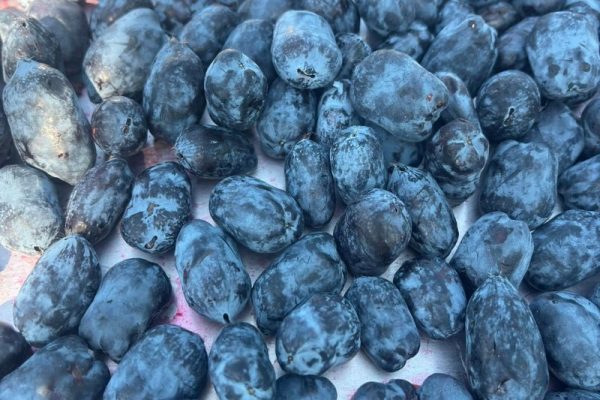
Where Do They Come From?
Honeyberries are a circumpolar treasure, naturally found in the boreal regions of Asia, Europe, and North America. For centuries, families in northern Japan and Russia harvested these berries from the edges of forests and meadows, treasuring their resilience in harsh winters and their early spring harvest. Indigenous peoples in North America also gathered them, appreciating their vibrant flavor and nutritional strength.

In the late 20th century, plant breeders in Japan, Russia, and Canada began refining wild varieties into cultivated forms that could be shared more widely. Today, honeyberries are emerging as a new crop across the northern United States, where growers are embracing them for their hardiness, unique flavor, and market potential. What was once a hidden gem of the north is now becoming one of the most talked-about “new fruits” in modern agriculture.
Why They Matter
(Benefits & Superpowers)
Antioxidant Rich – Beyond Blueberries
Natures Early Superfruit
Honeyberries aren’t just another berry—they’re a powerhouse. Packed with antioxidants, they rank among the top fruits for combating free radicals, often surpassing blueberries. They’re naturally rich in Vitamin C, fiber, and polyphenols, making them a smart choice for supporting heart health and immune strength. And because they ripen in late spring—before strawberries—they bring the first taste of summer when you need it most.
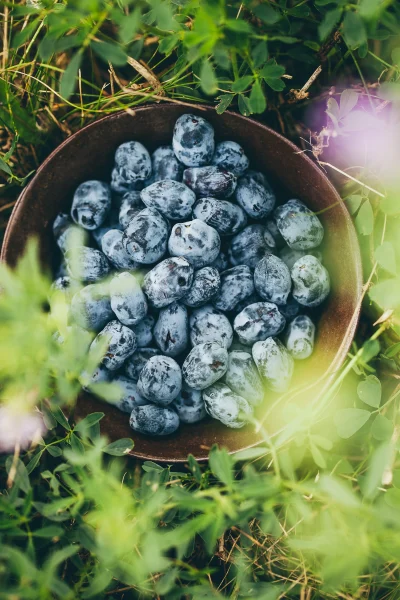
What Do They Taste Like?
Imagine the sweetness of a blueberry, the tang of a raspberry, and the depth of a Concord grape—all in one bite. That’s the honeyberry. Each variety carries its own nuance: some lean bright and zesty with a refreshing tartness, while others are velvety, mellow, and dessert-sweet.
The first taste is often a surprise—juicy, with an almost “wild” edge that reminds people of foraging berries in the woods. Then comes the complexity: layers of flavor that shift from sweet to tangy, with undertones that can feel almost floral, wine-like, or jammy. This is what makes honeyberries irresistible not just to families enjoying them fresh, but also to chefs, bakers, and brewers who prize them for their depth and versatility.
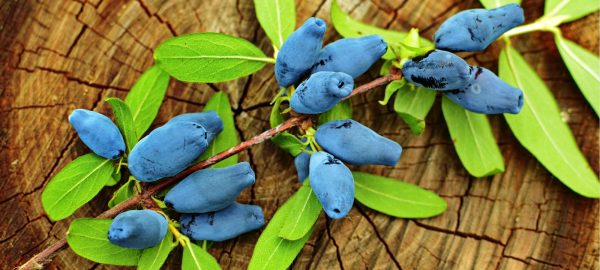
How They’re Grown
(For the Curious)
Cold hardy and easier than blueberries!
Honeyberries are Made for Northern Growers
These hardy shrubs shrug off bitter winters and bloom early in spring. They prefer cool climates and acidic, well-drained soil. For backyard growers, honeyberries are simple: plant two varieties for cross-pollination, give them space to breathe (3–4 feet apart), and watch them flourish. By the third year, shrubs begin producing impressive harvests, with mature bushes yielding several pounds each.
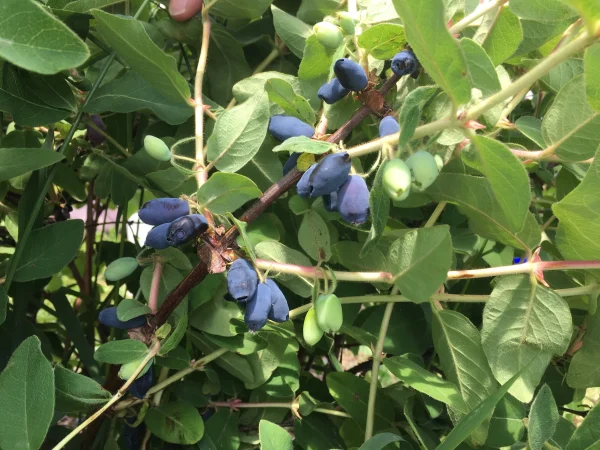
Great Ways to Enjoy them – Recipes and Uses
Honeyberries are as versatile as they are delicious. Eat them fresh by the handful, toss them into smoothies, or bake them into muffins and pies. They make jewel-toned jams, tangy sauces for meats, and deeply flavored ice creams and sorbets. Some adventurous brewers even use them for craft beer and wine.
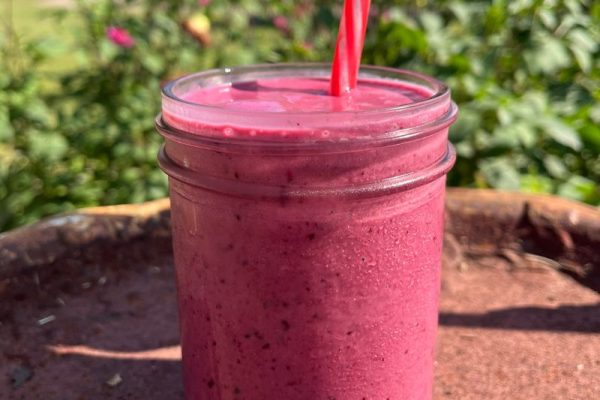
Learn more about how amazing these berries are for you!
More about Growing Honeyberries
With proper care, plantings can remain productive for 30 years or more, making them a long-lived and sustainable crop for northern growers.
Honeyberries thrive in cool temperate regions and perform best with full sun exposure and well-drained soils, though they tolerate a wider pH range than blueberries. Because they leaf out early, they benefit from sites with good air circulation to reduce spring frost pockets, even though their flowers are among the most frost-hardy of fruit crops. Fertility requirements are moderate: studies from the University of Saskatchewan indicate that balanced nitrogen applications improve early growth and berry size, while excessive nitrogen can reduce fruit quality. Mulching with organic matter helps conserve soil moisture and suppress weeds, which is particularly useful in young plantings where shallow root systems compete poorly. Honeyberries are also relatively pest- and disease-resistant, with most management focused on weed control and bird protection rather than chemical sprays.
From a grower’s standpoint, honeyberries are relatively forgiving and designed for northern climates. University extension guidance recommends spacing shrubs roughly 3–4.5 ft within the row (8–10 ft between rows) and pruning lightly in late winter to open the canopy. Birds—especially cedar waxwings—are the most common harvest challenge, so netting is often essential. As plantings mature, hand harvest is typical, but many modern cultivars were selected for uniform ripening and can be mechanically shaken; mature bushes commonly yield several kilograms per plant, and field trials report typical fruit sugars around ~11–14 °Brix.
